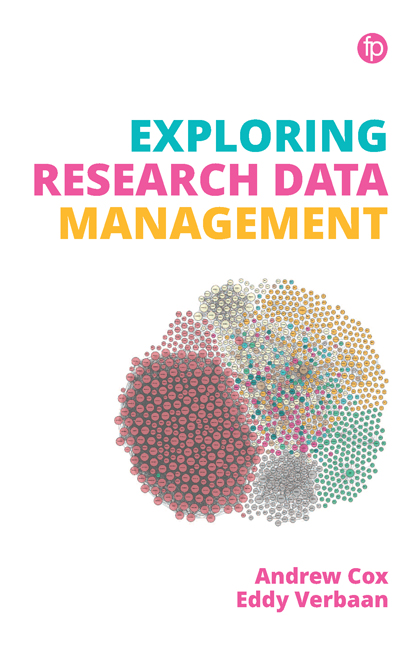Book contents
- Frontmatter
- Contents
- List of tables and figures
- 1 Introducing Research Data Management
- 2 The Social Worlds of Research
- 3 What Are Research Data?
- 4 Case Study of RDM in an Environmental Engineering Science Project
- 5 RDM: Drivers and Barriers
- 6 RDM as a Wicked Challenge
- 7 Research Data Services
- 8 Staffing a Research Data Service
- 9 Requirements Gathering for a Research Data Service
- 10 Institutional Policy and the Business Case for Research Data Services
- 11 Support and Advice for RDM
- 12 Practical Data Management
- 13 Data Management Planning
- 14 Advocacy for Data Management and Sharing
- 15 Training Researchers and Data Literacy
- 16 Infrastructure for Research Data Storage and Preservation
- 17 Evaluation of RDS
- 18 Ethics and Research Data Services
- 19 A Day in the Life Working in an RDS
- 20 Conclusion: the Skills and Mindset to Succeed in RDM
- Index
4 - Case Study of RDM in an Environmental Engineering Science Project
Published online by Cambridge University Press: 21 September 2019
- Frontmatter
- Contents
- List of tables and figures
- 1 Introducing Research Data Management
- 2 The Social Worlds of Research
- 3 What Are Research Data?
- 4 Case Study of RDM in an Environmental Engineering Science Project
- 5 RDM: Drivers and Barriers
- 6 RDM as a Wicked Challenge
- 7 Research Data Services
- 8 Staffing a Research Data Service
- 9 Requirements Gathering for a Research Data Service
- 10 Institutional Policy and the Business Case for Research Data Services
- 11 Support and Advice for RDM
- 12 Practical Data Management
- 13 Data Management Planning
- 14 Advocacy for Data Management and Sharing
- 15 Training Researchers and Data Literacy
- 16 Infrastructure for Research Data Storage and Preservation
- 17 Evaluation of RDS
- 18 Ethics and Research Data Services
- 19 A Day in the Life Working in an RDS
- 20 Conclusion: the Skills and Mindset to Succeed in RDM
- Index
Summary
Aims
The aim of the chapter is to give you a deeper insight into the nature of the issues around RDM by exploring a particular case study in some depth.
The project
In this chapter we will look at a case study of a particular research project. The focus is on the different types of data that are collected, created and reused. We will also use it to consider the challenges that the complexity of the research project present to the management of active data and their long-term preservation. The chapter gives you direct access to a researcher speaking about their work in their own words.
This case study consists of an interview with Steve Banwart, Professor of Environmental Engineering Science at the University of Sheffield. He is the leader of a large-scale project that is funded by the European Union. The project looks at how soil – one of our planet's essential natural resources – is produced and how it degrades. The aim is to quantify the impacts of environmental change on key functions of the soil and capture this in predictive models that can be used in decision making.
The project is international in scope. Soil Transformations in European Catchments (SoilTrec) brings together a network of over 30 research field sites. Professor Banwart explains that ‘it has 16 different institutions, as partners located in 3 different continents.’ The partner institutions are primarily in Europe, but also in the USA and in China.
Working with geographically dispersed teams that each collect data that need to be understood and ultimately combined with the data that other teams collect is quite a challenge in itself. But to add to the complexity of the project, these teams are also multidisciplinary and include, for example, engineers, chemists, biologists and physicists. It is therefore not surprising that the researchers working on the project handle a wide variety of data, sometimes in large quantities. This project handles data that are generated principally through observations and experiments in the field, ‘digging holes in the ground and studying dirt, if you will’, as well as laboratory experimentation. Data are also generated through computer modelling. And, Professor Banwart adds, ‘we also use existing remote earth observation data, primarily satellite data and geographical information systems held by government agencies like the European Soil Bureau.’
- Type
- Chapter
- Information
- Exploring Research Data Management , pp. 33 - 40Publisher: FacetPrint publication year: 2018



